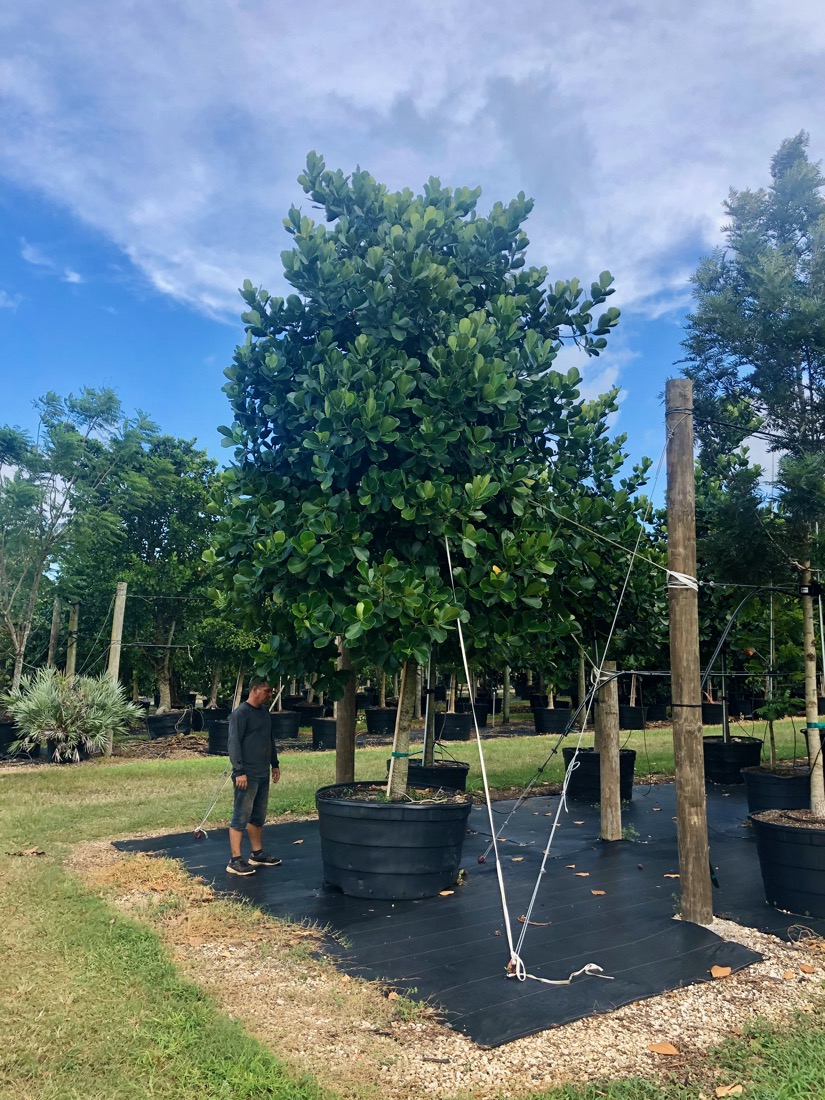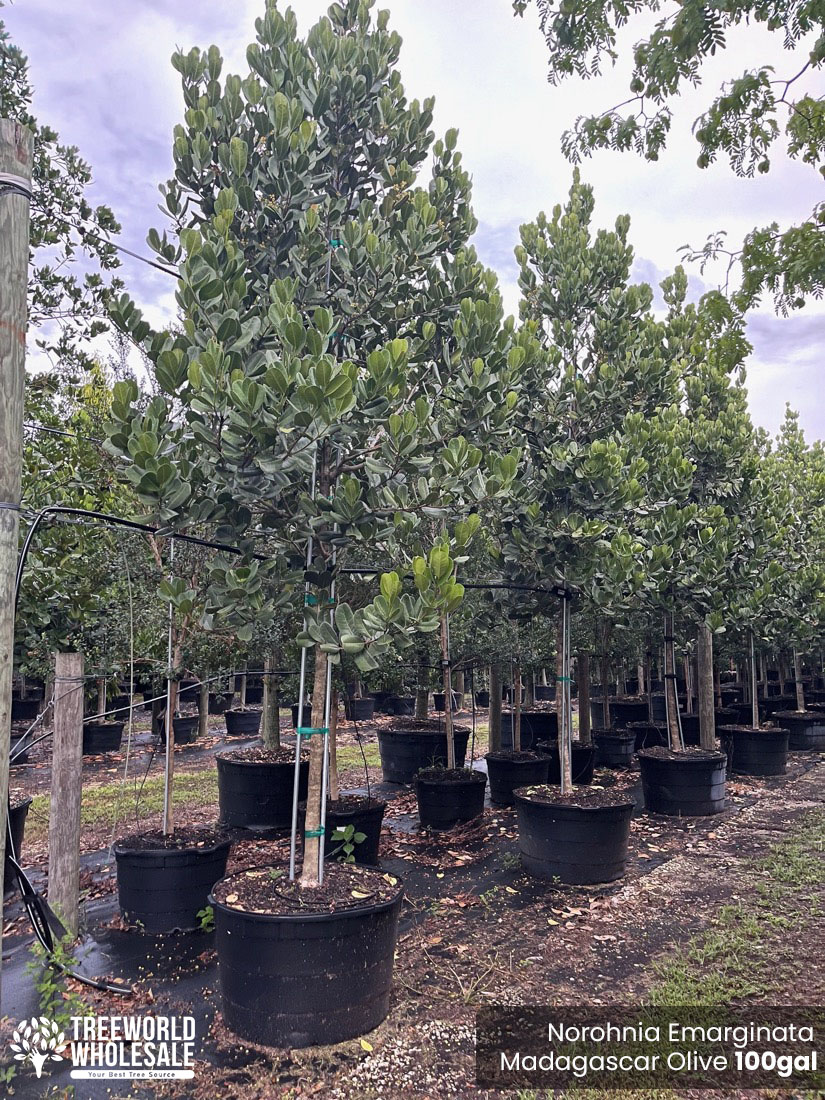Description
Madagascar olive tree description
Noronhia emarginata (Madagascar olive) is a small tree or shrub growing to a height of 30 feet. Additionally, it has an upright spreading dense oval to vase-shaped irregular crown and smooth gray bark. Moreover, the leaves are entire, simple, glossy, erect, and opposite. Also, the leaves are elliptical to obovate and 4 to 6 inches. Flowers are white to yellow, inconspicuous, fragrant, borne in clusters, blooms globose, fleshy, cup-like in shape with 4 petals, and about 1/4 inch across. Fruits globose, slightly rough, initially bright yellow ripening to dark brown, drying hard, about 3/4 inches long and edible.
Noronhia Emarginata cultivation and landscaping use
Propagation is by cuttings or seeds. Furthermore, Madagascar olive tree grows well in a range of soil types if well-drained and is known for its hardiness and resistance to salt and wind. It needs pruning for a pleasing form and strong structure.
In landscaping, Noronhia Emarginata tree is ideal for the seaside, as a windbreak or privacy hedge, and as a specimen plant in gardens and parks for its attractive foliage and form. It can be grown along roadways without sidewalks, in parking lot islands, highway medians, and in containers. A cluster of trees provides an attractive grouping. Also suitable for a xerophytic garden. However, the litter from fruit fall may present a problem.
🌳Other popular and beautiful plants: Ravenala Madagascariensis.













